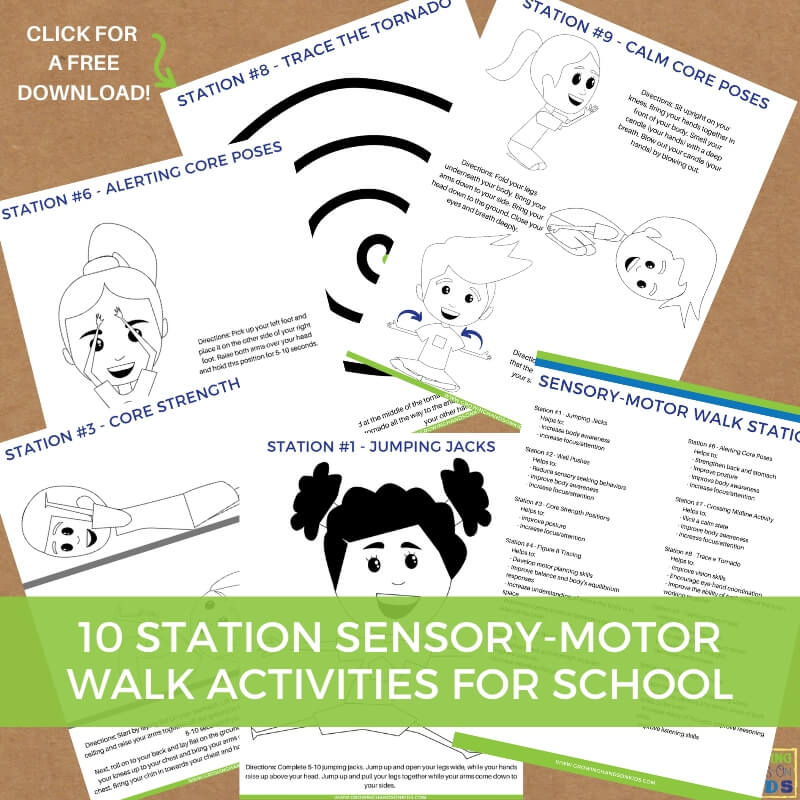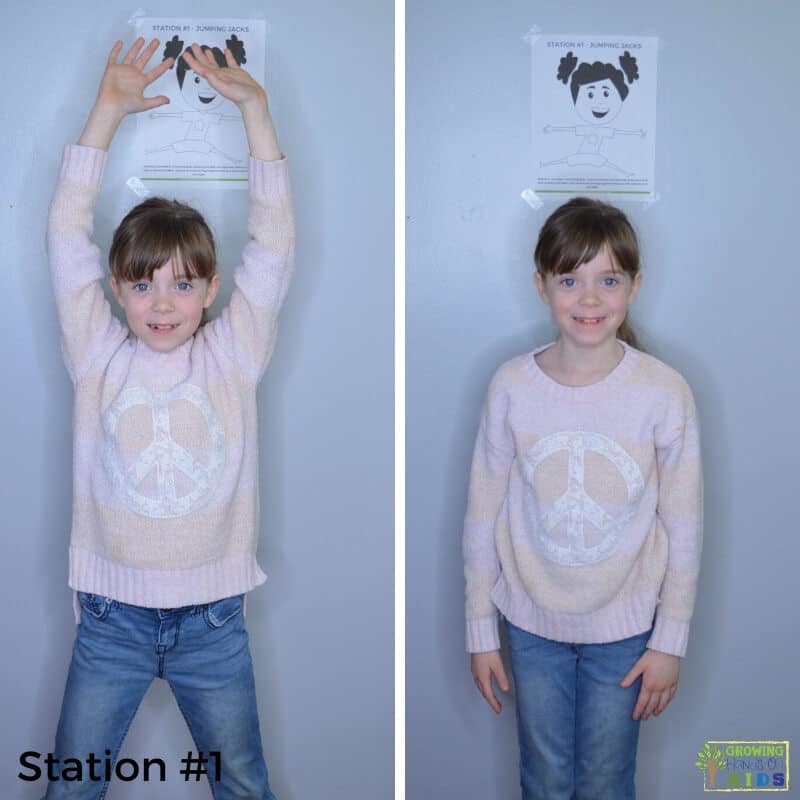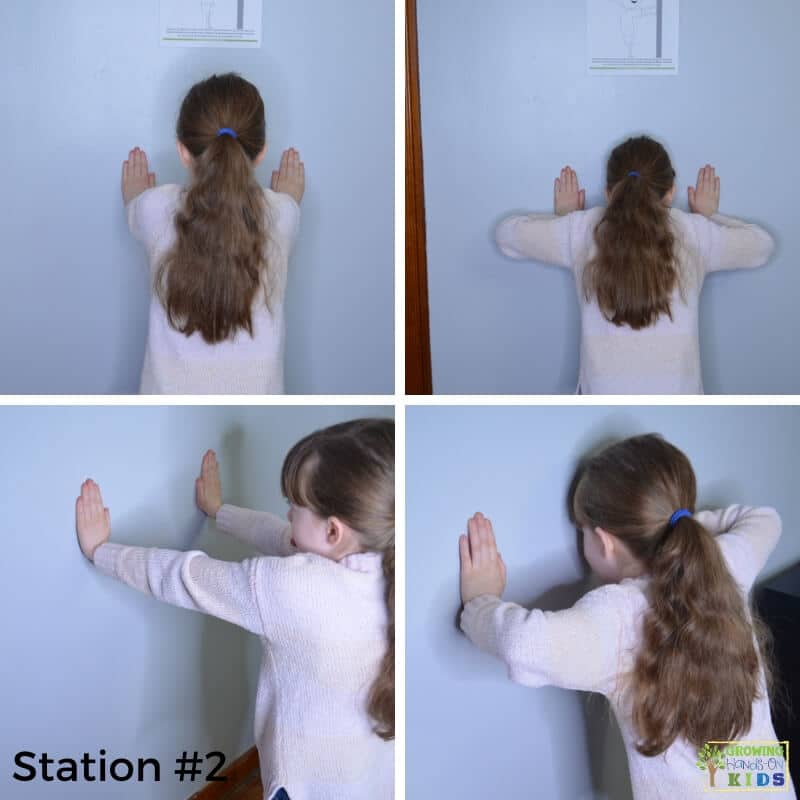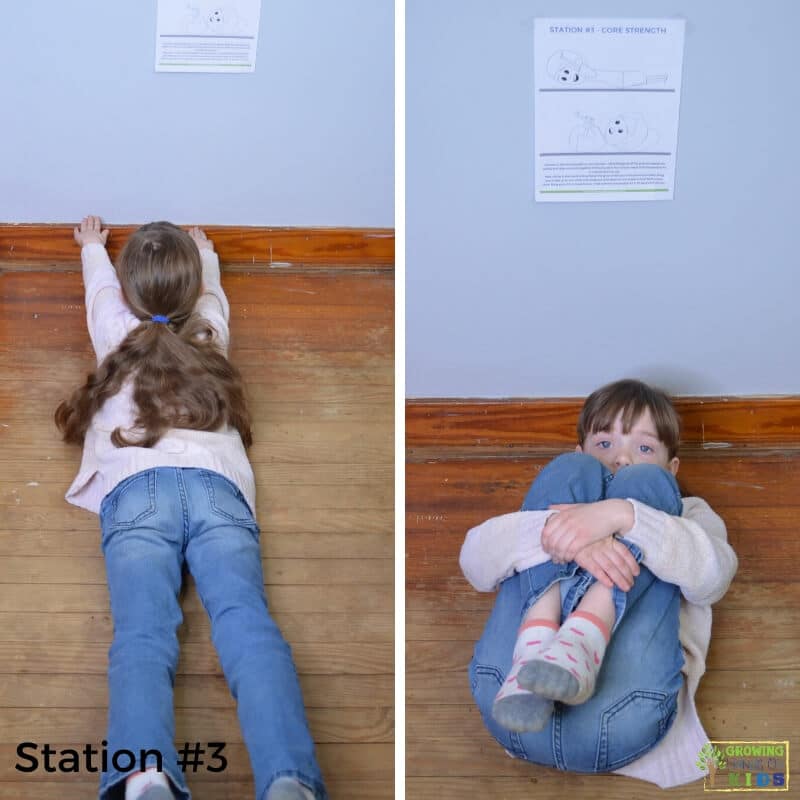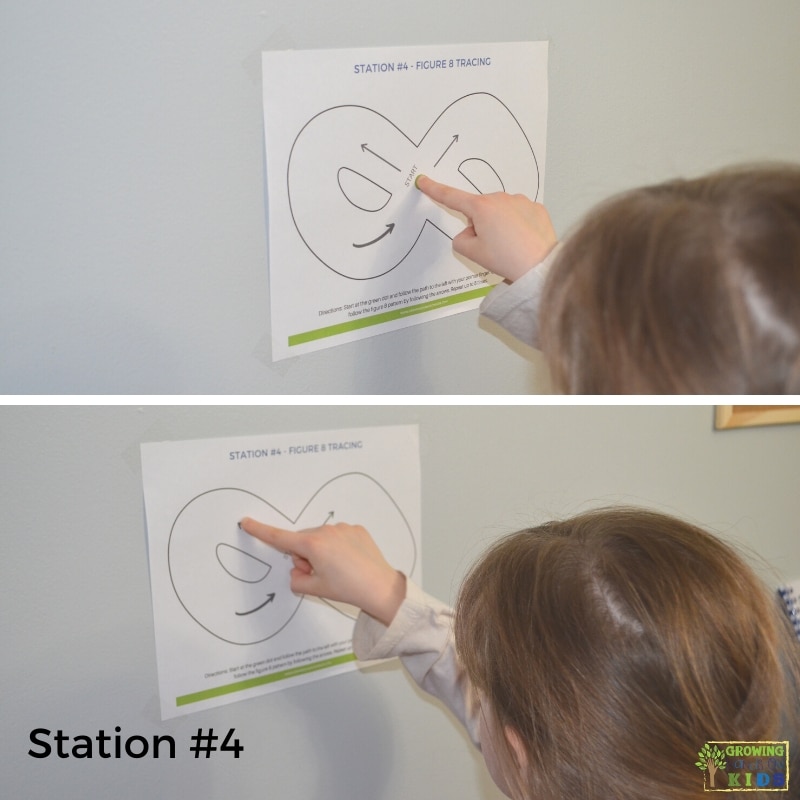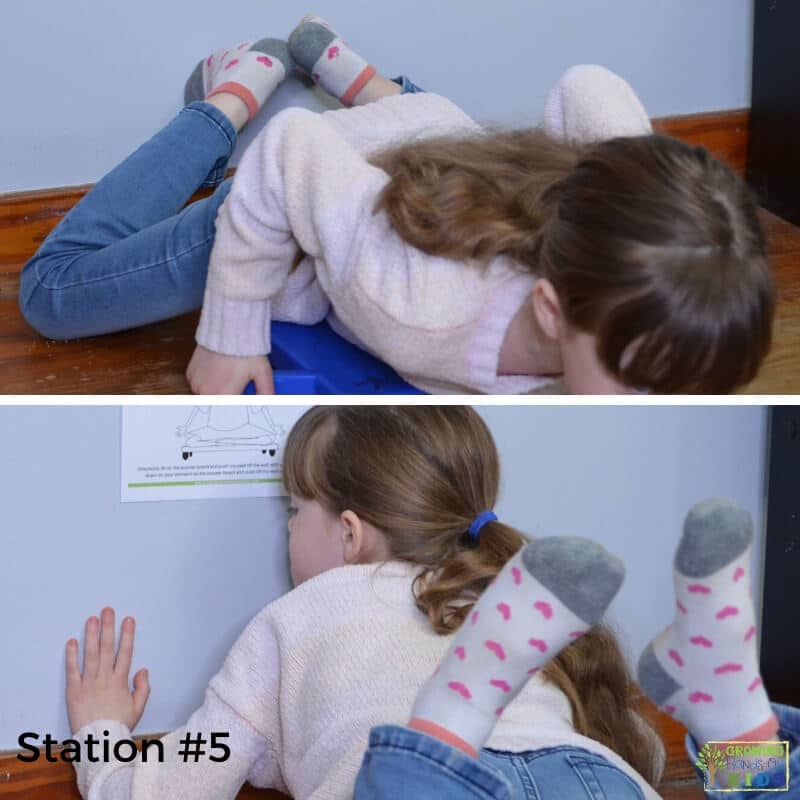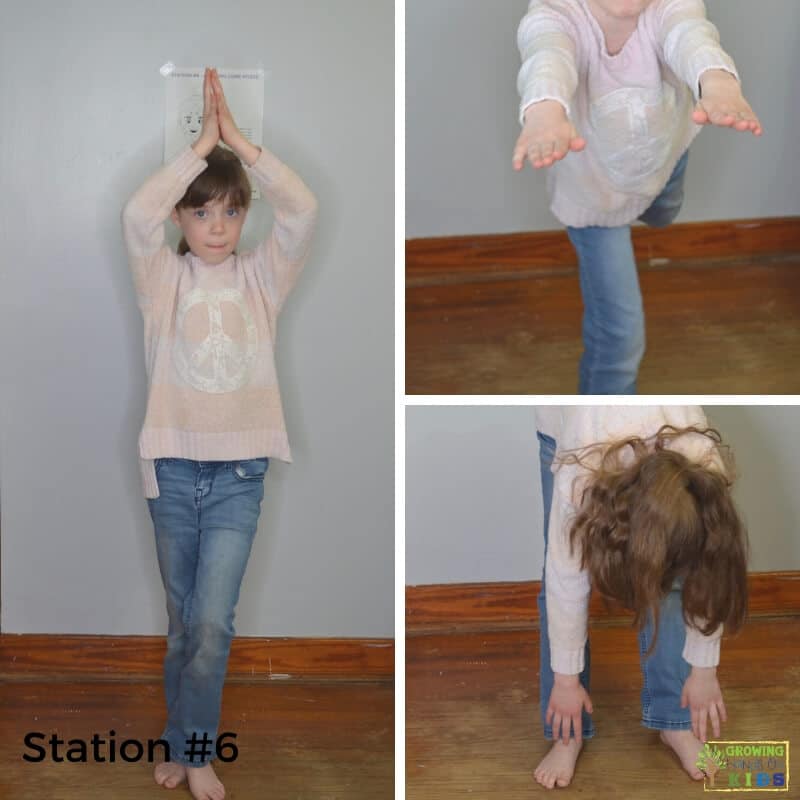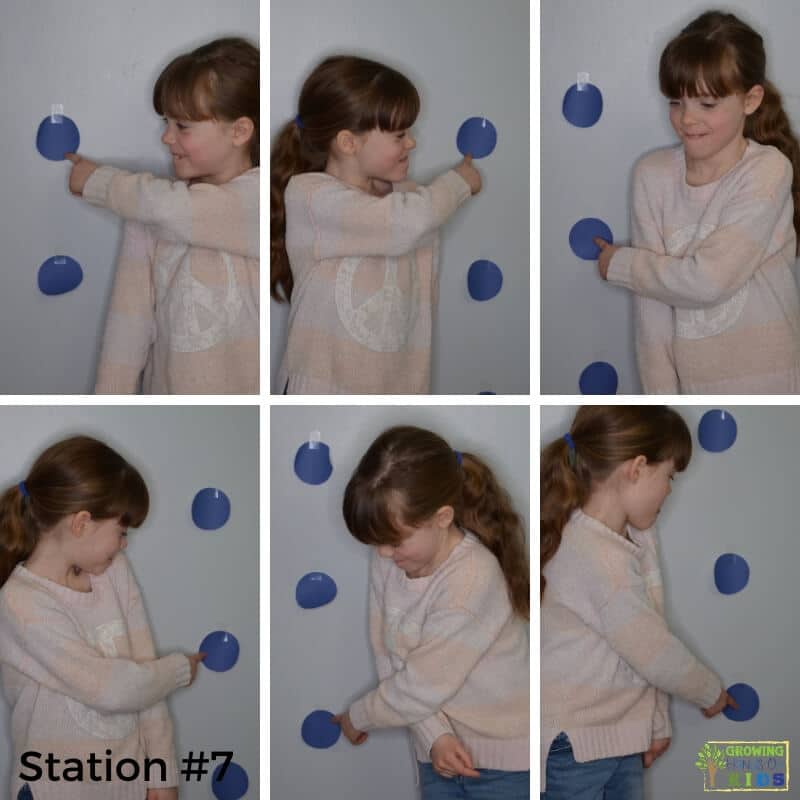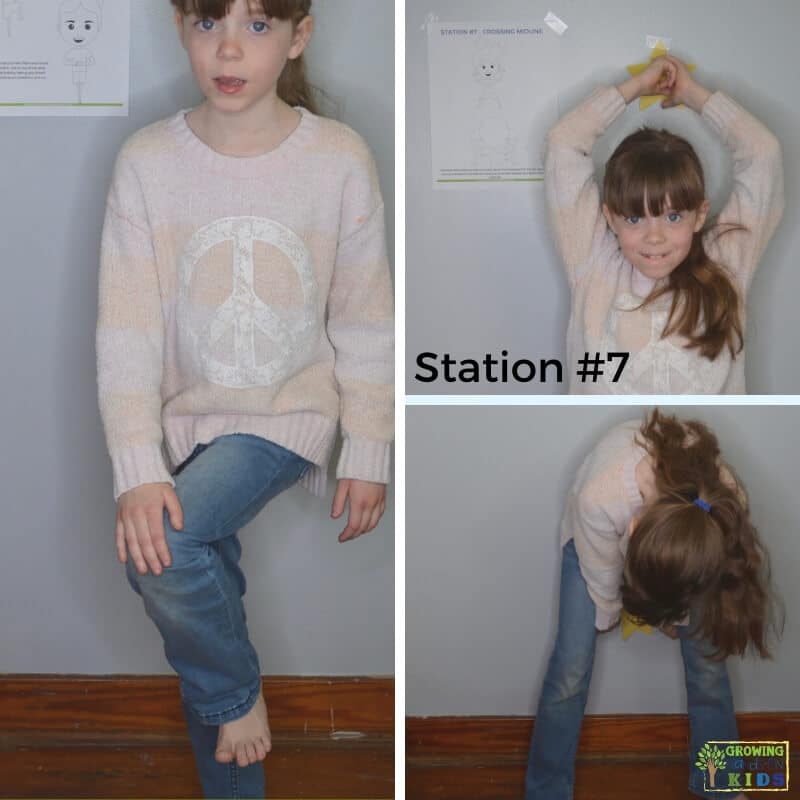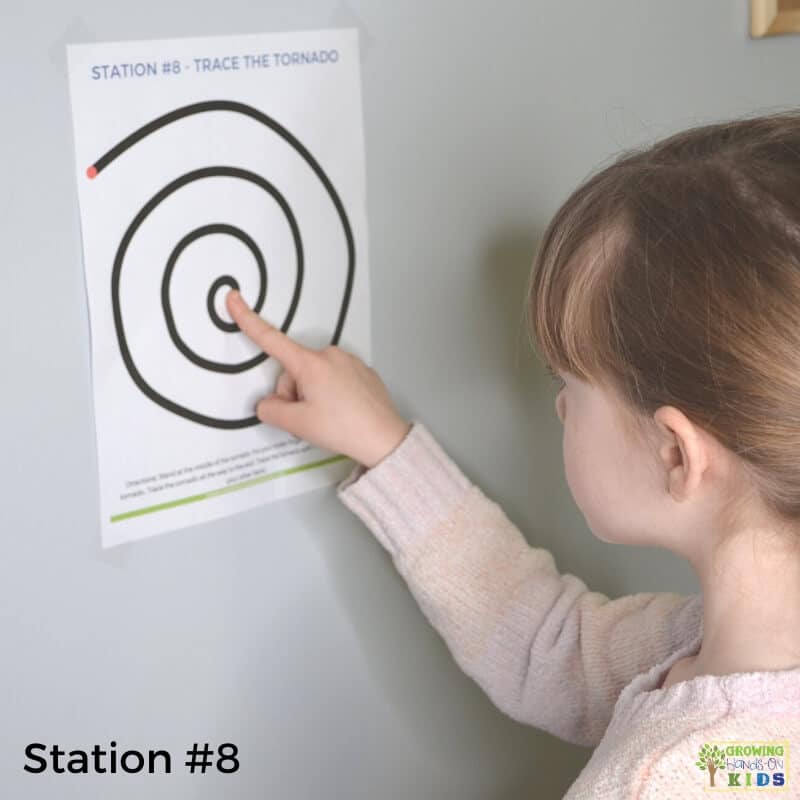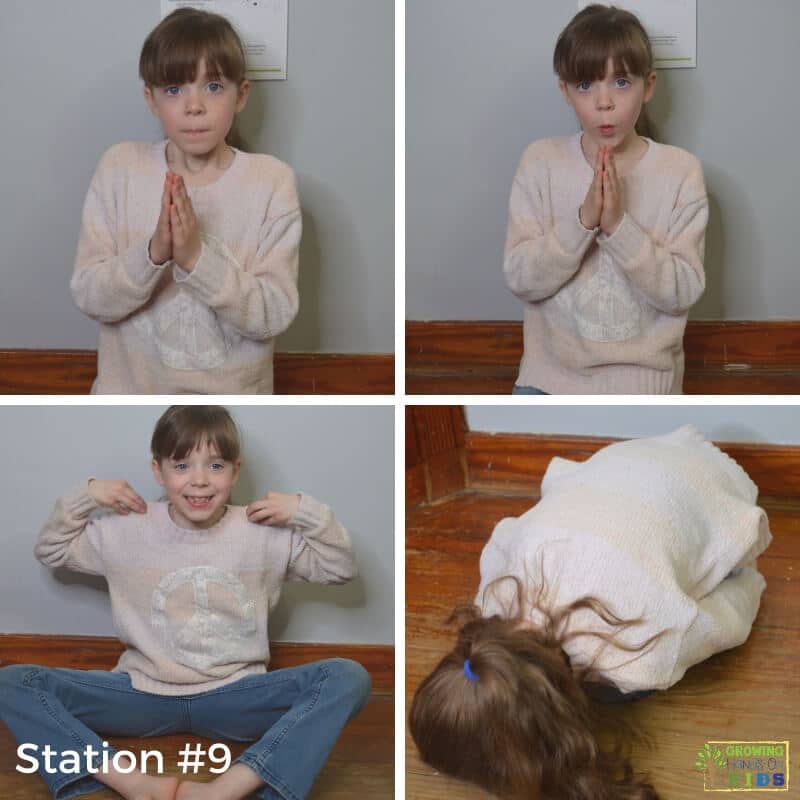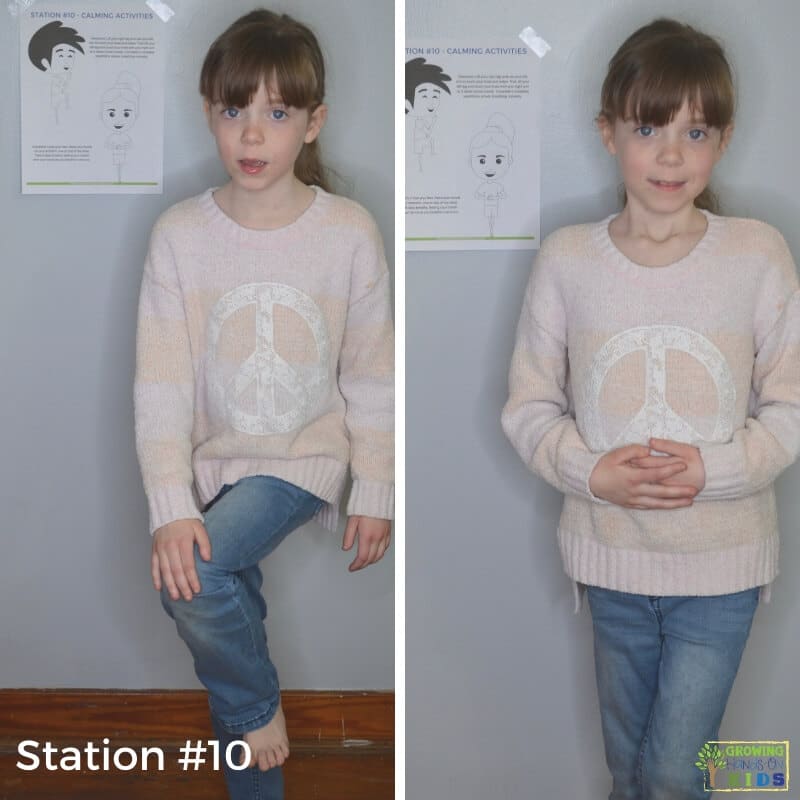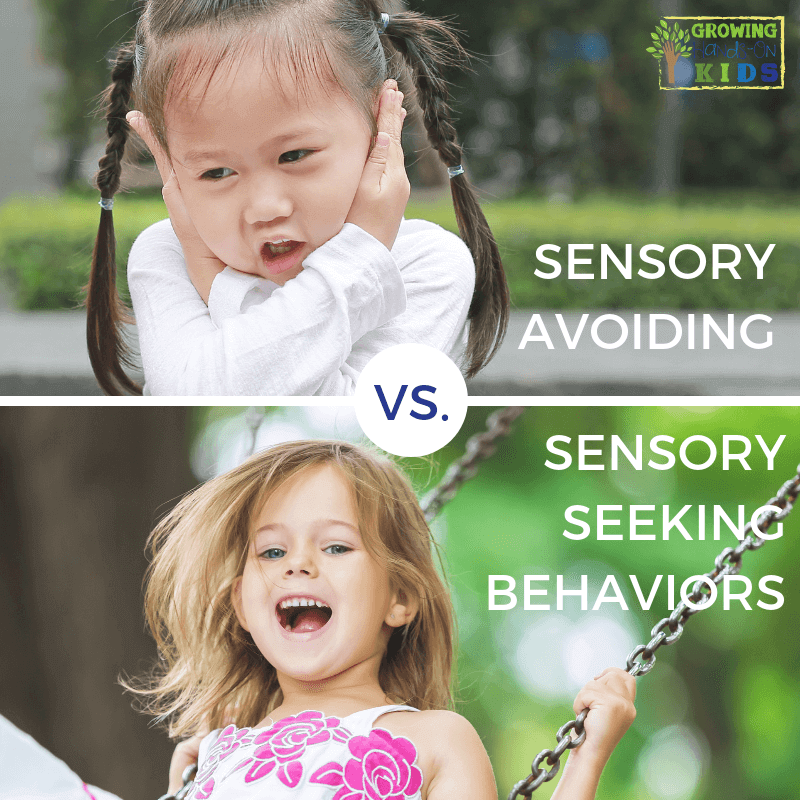10 Station Sensory-Motor Walk Activities for School – Free Printable
Affiliate and Referral links are used below to promote products I love and recommend. I receive a commission on any purchases made through these links. Please see my disclosure policy for more details. As an Amazon Associate, I earn from qualifying purchases.
You've probably seen the videos or pictures on social media of “sensory walks” or “sensory paths” that many schools are putting in their hallways. When I was working at one of our local schools, I created these sensory-motor walk activities and used an empty hallway next to our sensory room.
You could also use these in a hallway at home and it would make a great for getting home from school and transitioning back into routines at home.
“Sensory walks” vs. “sensory paths” vs. “sensory-motor walks”
I tend to avoid using the term “sensory walk” or “sensory path” since it really is a movement walk with sensory processing woven in. I feel that the term “sensory-motor walk” is much more conducive to what it actually is. While there are definitely some sensory components, particularly with the proprioceptive and vestibular system, it is not a true 8 systems sensory walk. The focus is on movement and encouraging the brain to wake up while helping the body to reach that just-right level of arousal for focus and attention.
Benefits of Sensory-Motor Walks
A sensory-motor walk is just one of the many tools you can provide students to give them a boost in gross motor activity, which in turn will improve focus and attention in the classroom.
Sensory-motor walks can also be very beneficial during transition times, such as coming back from recess or lunch. These two times are often very difficult for students to transition from into the classroom. Having them complete the sensory-motor walk activities gives their body time to reach that just-right level from possibly being overwhelmed or overloaded during lunch or recess.
10 Station Sensory-Motor Walk Activities
I'm going to give you exact instructions on how to set-up each station and also pictures on how each activity should be performed. If you have a local Occupational Therapist, I would highly recommend talking to them and also having them show staff or students how to use the sensory-motor walk with the correct posture. They can also help you assess the effectiveness of using the sensory-motor walk, along with setting up a schedule for different classes or students to use it.
I set these sensory-motor walk activities up in an empty hallway that led to an outdoor courtyard beside our sensory room at the school I was working at. It requires very few pieces of equipment and you can also just pick and choose which stations to include if you have a smaller space.
One thing I always stress is to end with a calming activity before ending the sensory-motor walk. The first few activities are designed to wake the body and brain up, but if you leave the child in that state and ask them to come back to class and it, that transition can be difficult.
Always end with some calming activities to help bring their body and brain back to that just-right level of awareness and alertness.
I've included pictures of my daughter completing each station below. Please ignore my old farmhouse floors, haha. Hopefully, they will be fixed here soon. 🙂
STATION #1 – JUMPING JACKS
You can set a certain number amount for children to complete before going to the next station. Five is typically a good starting point depending on their skill level.
Also, provide adaptations such as just jumping with the feet and keeping the hands on the sides of the body. Or just the hands moving up and down with the feet standing still. You can gradually include both together as children progress with this skill.
Jumping jacks provide increase body awareness, focus, attention, and can elicit a calm state for children. It is an excellent way to engage the proprioception system.
STATION #2 – WALL PUSHES
Again, you can set a certain number amount for children to complete, five is a good starting point.
For this particular station, I would also suggest using some painters tape to mark the floor for where the child should put their feet. Their feet need to be far enough away so that their hands can be flat on the wall with the elbows completely straight (or extended).
Wall pushes can help reduce sensory seeking behaviors by providing proprioceptive input that many children crave. They can also improve body awareness, focus, and attention.
STATION #3 – CORE STRENGTH
These two exercises are designed to build the core muscles needed for seated work at a desk and many other daily functions of a child.
The first exercise is in the prone position (on the stomach). Have the child lay completely flat and then lift the arms and legs up off the ground at the same time. The goal is to get to 10 seconds or more of holding this position. Many children start out below 5 seconds.
A couple of things to look for is that the child keeps their elbows and knees completely straight or extended. Many children who will struggle with this activity try to bend their elbows in or their knees up.
The next position is in supine (on the back). Have the child lay completely flat with their arms above their head. Then have them curl into a ball by bringing the knees into their chest, placing their hands on their knees, and pulling their head up towards their knees. The object is to hold this position for 5-10 seconds without falling over onto their side.
You might see a child trying to extend their neck out or start to roll onto their side as they fatigue.
Both of these positions help to improve posture, focus, and attention.
STATION #4 || FIGURE 8 TRACING
For this station, you will also need a piece of painters tape to mark the spot where the child should stand. Have them stand directly in the middle of the large figure 8 printable and air trace it with their pointer finger (dominant hand first, then opposite hand).
You will want to start by having them trace up the left side of the figure 8, moving down and then across to the right side and back to the middle.
This exercise helps to develop motor planning skills, improve balance and the body’s equilibrium response, understanding where the body is in space and improves communication between the opposite sides of the brain.
STATION #5 || SCOOTER BOARD
If you do not have room for a scooter board or want to switch out this station, I have an alternate station idea for you.
For the scooter board activity, have two areas marked, one as the starting point and another as the turn around point. Place a bean bag or object at the turn around point for the child to collect and bring back with them. Or you can simply time them in a race against the clock.
The child should be on their stomach and using their arms and legs to move the scooter board in an army crawl type movement.
Alternatively, if you do not have a scooter board, have the child army crawl on their stomach or crawl on their hands and knees to complete this station.
The scooter board or crawling helps to strengthen the back and stomach as well as improve bilateral coordination.
STATION #6 || ALERTING YOGA POSES
This particular station has the child complete yoga poses which typically provide an alerting response for the child. They can also strengthen the back and stomach, improve posture, body awareness, focus, and attention.
STATION 7 || CROSSING MIDLINE
I discuss the importance of crossing midline in this post here. For this station, I included 3 different activity options.
Option 1 is using the index finger to push all the buttons by reaching across the midline to the opposite side. Alternate hands and sides to complete this activity (see the short video below)
Option 2 is a cross-crawl activity. And option 3 is touching the star above their heads and below them (have them stand with feet apart so they can see the star when they bend over).
For option 3, you can have a child hold a small ball and touch the stars with the ball if they have trouble touching with both hands at the same time.
STATION 8 || TRACE THE TORNADO
This station is very simple to execute. You may need to place a line on the floor with painters tape if your child tries to stand too close to the wall to do this. My daughter also went from the red dot to the green dot after starting at the green dot, so you could certainly have your children do this as well.
The main difficulty with this station is going slow enough to keep their finger on the line. I had to give my daughter a couple of verbal cues to slow down so she could stay on the line.
STATION 9 || CALM YOGA POSES
If you don't have time to complete every single station that is fine, but I would always include stations 9 and 10. If you send a child back to class all hyped up, it defeats the purpose of using the sensory-motor walk. 🙂
Children need time to decompress and regulate in order to return back to class with more attention and focus. That is the point of the last two stations, taking time to relax and breathe before going back.
I love the analogy of smelling a flower and blowing out the candle for deep breathing. It's easy for kids to understand what this looks like.
I would suggest holding each pose for 10-20 seconds, depending on how much the child needs to relax.
STATION 10 || CALMING ACTIVITY
Cross-crawls can be calming because of the repetitive motion. It's important that they complete these motions smoothly and slowly while breathing normally.
The last activity pulls in some interoception by feeling their breathing rate by placing their hands on their stomach and breathing deeply.
Setting Up Your Sensory-Motor Walk
For taking the pictures here at home, I just used some tape to hang the pictures to the wall. If you are short on time or supplies this would work fine.
I would suggest printing each station out on cardstock and laminating them. This will ensure that the stations last longer. I used glue-dots to fasten them to the wall when I was working at my local school.
If you are putting them in a more permanent area and are able to, you could also put them into frames and hang them on the wall.
You will also want to get some painters tape to mark areas on the floor where children are to stand for the wall push-ups (station #2) and any of the other stations where children may need an extra visual cue on where to stand to complete the activities.
If you have a scooter board, have it nearby. We kept ours in the special education room which was right next door so anyone could grab it when using the sensory-motor walk in the hallway next to our room.
Get Your FREE Sensory-Motor Walk Activities Printable
To get your copy of this FREE 10 Station Sensory-Motor Walk Activities Printable, just enter your email address into the form below.
You will be agreeing to receive my newsletter, which I send once a week and is all about child development tips, tools, and strategies. You can unsubscribe at any time.
For more information on sensory processing, check out my other posts below.

Heather Greutman, COTA
Heather Greutman is a Certified Occupational Therapy Assistant with experience in school-based OT services for preschool through high school. She uses her background to share child development tips, tools, and strategies for parents, educators, and therapists. She is the author of many ebooks including The Basics of Fine Motor Skills, and Basics of Pre-Writing Skills, and co-author of Sensory Processing Explained: A Handbook for Parents and Educators.

